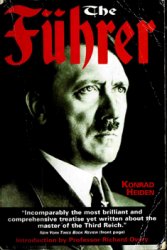Operational groups had to fulfill their "limits.” If they had too much paperwork or were otherwise restricted, they could not process enemies with sufficient speed. Ezhov's directive, at first glance, appears to impose such administrative burdens. The case file should include the arrest order, search protocol, confiscated materials, and the indictment. Ezhov's allowance of "simplified procedures,” a code word to proceed with minimal formalities, however, provided the escape clause for harried operational groups. The work of a head of an operational group in a remote Siberian town (who had arrested one thousand locals) illustrates the flexibility of simplified procedures. Despite complaints that he could only process three cases per day, he somehow managed to submit two hundred and sixty first-category cases in less than two weeks, most of which were approved by the troika.20 The greatest simplification was the Law of December 1 (passed on the day of Kirov's assassination), which declared that confession was a substitute for objective evidence. Once a confession was extracted, the matter could go directly to the troika. Such simplified procedures allowed the NKVD's "conveyer” of repression to work at full speed.
Order 00447 also instructs that the "investigation should uncover all criminal ties of the arrested party.” Isolated enemies of the Soviet regime were not dangerous; they were only dangerous as part of a larger conspiracy. The goal of the interrogation was to incriminate others. Confessions were extracted by appealing to patriotism, promising to spare loved ones, pledging prison instead of death, and, most commonly, torturing. Persons subjected to these techniques implicated friends, fellow workers, and even casual acquaintances. They dutifully confessed to improbable plots, such as Stalin's lifetime friend and fellow Georgian's (A. Enukidze) confession of a plot to assassinate Stalin and other Politburo members,21 as the transcript of his interrogation shows:
Q: How many persons did you need to carry out the revolt within the Kremlin.
A: Twenty to twenty-five persons.
Q: How many did you have?
A: Fifteen.
Q: Who are they?
[Enukidze gives their names].
Q: Why didn't you carry it out?
A: We had agreed with Tomsky that I would await his order.
Q: If you had received this order would you have carried it out?
A: Yes.
A low-level official signed a confession of involvement in a conspiracy to assassinate Stalin with people she had never met: "I did not have the strength to resist further. At that time, I did not care if they shot me or sentenced me, and I signed everything that they wanted.” Another signed a bizarre confession when promised that life in the camps would be easier than trying to hold out.22 Ezhov's antiseptic section on investigations conceals their extreme brutality:
IV. Process of Carrying Out Investigations
1. For every arrested party or group of arrested persons, there is to be an investigation. The investigation is to be carried out quickly and in a simplified procedure.
In the process of the investigation all criminal ties of the arrested should be uncovered.
2. Upon conclusion of the investigation the case should be submitted to the troika for examination.
In the case material should be included: the arrest order, the search protocol, material confiscated during the search, personal documents, agent-registration material, the protocol of the interrogation, and a short indictment.23




 World History
World History









